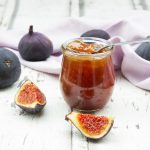Capers
Isn’t it amazing that such a tiny thing as the caper can emit such a strong burst of flavour? And aren’t we lucky that we have caper plants growing wild all around us and could pick and preserve our own capers if we had the will and the time?
The caper is a prickly perennial plant native to the Mediterranean and some parts of Asia. Its use dates back to 2,000 B.C. where it is mentioned as a food in the Sumerian Epic of Gilgamesh. It is most often associated with Mediterranean cuisines, but enjoyed worldwide. Brined or dried, the caper is valued for the texture and tanginess it gives to a great variety of recipes, including fish dishes, pasta, stews and sauces.
The capers we use in our meals are the buds of the caper flower. Some say that the smaller the bud, the better the flavour but others prefer the fleshiness of larger buds.
Due to capers’ strong taste, it’s best to use them sparingly. Rather than adding a handful, take care to find a balance in the meal that you’re preparing so that the caper doesn’t overwhelm the flavours of the finished dish.
Should you wish to pick your own capers and to cure them in vinegar, all you have to do is to carefully wash and dry them, then soak them in water with a spoonful of salt for two days, changing the water and rinsing the capers thoroughly once or twice a day. Put the rinsed and dried capers in a clean jar and cover with white vinegar, and you’ll have enough to tide you over for the whole winter.





